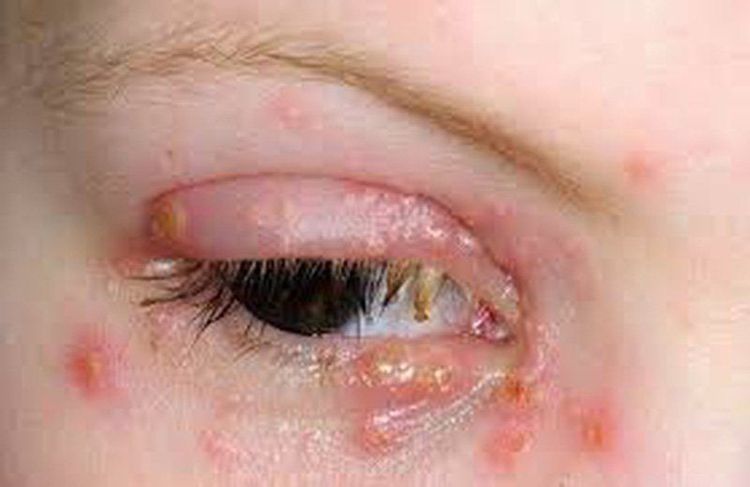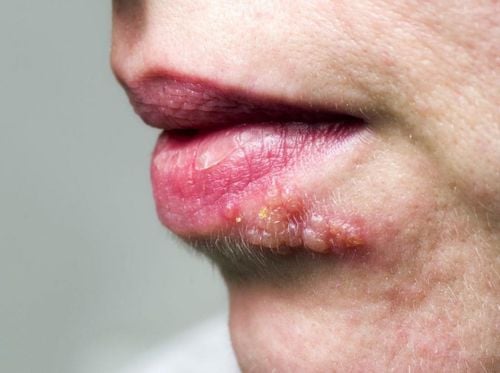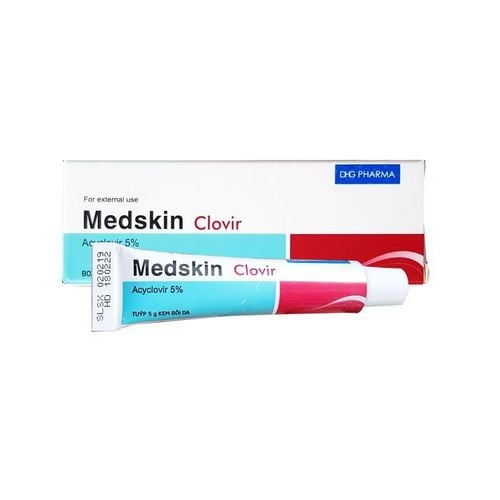This is an automatically translated article.
Shingles is a viral infection that causes a painful rash on the skin. Although shingles can appear anywhere on the body, the blisters appear mostly on the left or right side of the body.
1. Overview of the shingles
Shingles, also known as herpes zoster, is caused by the reactivation of the Varicella Zoster virus (VZV) - also the causative agent of chickenpox. Years after you have chickenpox, the virus can reactivate in nerve tissue near your spinal cord and brain to cause shingles. Shingles is a common illness that affects 1 in 3 people in the United States, with about 1 million cases reported annually according to the Centers for Disease Control and Prevention (CDC). CDC). Shingles can occur in patients of any age, but is more common in adults over 60 years of age. Although not a life-threatening condition, shingles can be painful.
Skin lesions of shingles are similar to those of chickenpox. Small, clear, fluid-filled blisters may itch for the first week and heal 2 to 4 weeks later. In addition, some people also experience other common symptoms of shingles including:
Stomach pain; Fever; Chills; Headache; Fear of light; Hurt all of the body. Shingles usually occurs only once, but there are some cases where recurrences have been reported.

Zona thần kinh gây ra các tổn thương về da
2. The "preferred" positions of the neural zone
For shingles, the first symptom you may notice is a tingling or painful sensation on one side of your body or shingles on your face. The blisters then emerge on only one side of the face or trunk along the distribution of nerves beneath the skin. Usually, the "preferred" locations of the shingles are:
Along the chest and abdomen; Shingles on the back ; Shingles on the face ; Shingles on the hand ; Shingles of the foot ; Other sites such as shingles in the ears, neck, mouth, shoulders or lower back; These areas can be very painful and itchy. The blisters are also very contagious from one area of the skin to another. After about 1-2 weeks, the blisters heal and form a scab, but the patient may still experience lingering pain.
Shingles in the mouth Shingles appearing in the mouth will make the patient very painful and have the risk of leading to complications of shingles such as:
Exacerbation of pain; Causes irritation and sensitization of the oral area; Difficulty chewing; Loss of appetite; Increased risk of oral infections due to open lesions. People with shingles in the mouth need to present the specifics of their condition to their doctor so that a special diet can be suggested to help the mouth heal and limit the risk of infection.
Answering the question "Is shingles on the lips contagious?", doctors said shingles appearing on the lips is one of the outbreaks of the virus around the mouth or on the lips, causing pain. In general, if not treated promptly and properly, the disease is easy to spread, as well as affecting the aesthetics of the face later.

Zona thần kinh không được điều trị kịp thời sẽ gây ra những biến chứng nguy hiểm
3. Complications of shingles
If left untreated, shingles can lead to the following complications:
Postherpetic neuralgia Sometimes pain from shingles will continue after the blisters have healed and can linger. for months or even years, especially in the elderly. This condition occurs when damaged nerve fibers send and magnify pain signals from the skin to the brain. The incidence of shingles and postherpetic neuralgia increases with age, with more than 50% of cases occurring in people over 60 years of age.
Vision loss Shingles in or around the eyes, or facial shingles in general, can spread to the eyes, leading to the risk of infection and loss of vision.
Nerve problems Depending on the affected nerves, shingles can cause encephalitis, facial paralysis or hearing problems or loss of balance.
Skin infections If shingles blisters are not taken care of properly, a bacterial skin infection can form and develop.
4. Treatment of shingles
When to see a doctor?
See a doctor if you suspect you or a loved one has had shingles, especially in the following situations:
Pain and a shingles rash on the face, especially near the eyes. If not treated promptly, this infection can lead to permanent eye damage;
Patients aged 60 years or older, the older the age, the higher the risk of complications;
Have a weak immune system due to cancer, drug use or chronic illness;
The blisters are widespread and painful.
Certain medications are used
Antiviral drugs such as acyclovir, famciclovir, and valacyclovir are all used to treat the active shingles virus. They work to speed up the recovery process and will be most effective if the patient starts treatment early as soon as the disease flares up. This is also one of the reasons why when suspected of having shingles, patients should go to a medical facility for examination immediately.
In addition, pain relievers may also be recommended to reduce inflammation during the healing process.
5. Care and prevention of shingles
Patients with skin damage caused by shingles or have just recovered need to be careful in taking care of their skin and teeth at home to prevent infection. Antibacterial products that contain ingredients that help eliminate germs and clean tissues will help keep the skin clean to facilitate better treatment.
Although shingles is not a dangerous disease, there is a risk of complications and serious aesthetic impact if shingles appear on the face, or shingles in the limbs. Therefore, as soon as you detect the symptoms of the disease, you should go to a medical facility to check so that the doctor can prescribe the appropriate treatment. Absolutely do not arbitrarily use topical drugs or leaves according to word of mouth, to avoid misuse or overdose causing harmful side effects.
Please dial HOTLINE for more information or register for an appointment HERE. Download MyVinmec app to make appointments faster and to manage your bookings easily.
References in the article: mayoclinic.org, webmd.com, colgate.com













